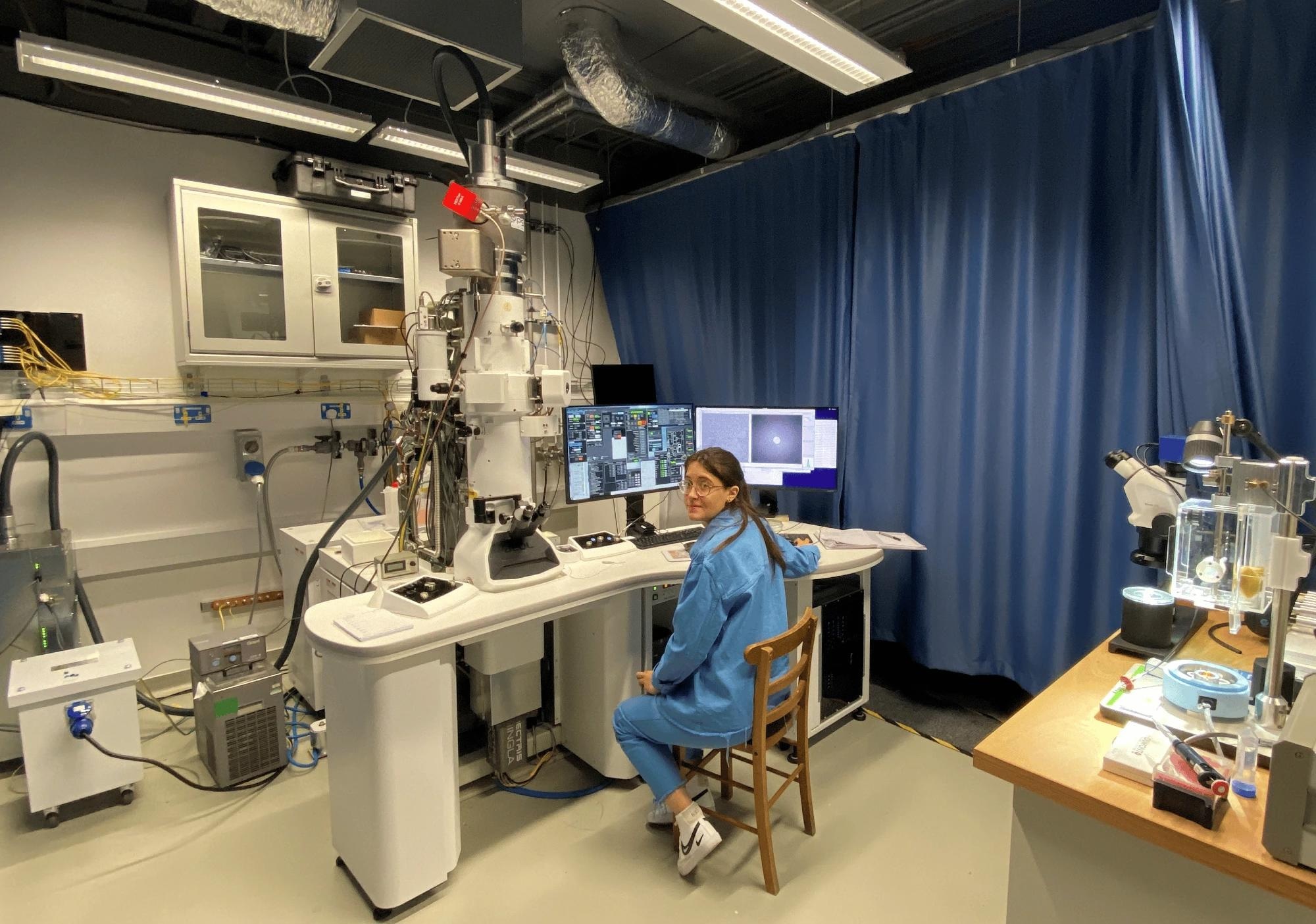A custom-designed electron cryomicroscope operating at 100 keV promises to minimize the expense and complexity of biological structure research.
Although electron cryo-microscopy (cryo-EM) has shown to be a helpful method for acquiring detailed atomic structures of biological materials, technical developments have constantly increased its costs.
The currently available cutting-edge microscopes cost several million dollars, preventing many scientists and organizations from using this advantageous method. This eventually hinders the advancement of molecular discoveries.
To address this, Chris Russo’s team and Richard Henderson, both from LMB’s Structural Studies Division, collaborated with a group from across the LMB and industrial partners at JEOL UK, York Probe Sources, and DECTRIS to create a novel microscope that is a fraction of the size and price of current models.
The escalating prices of electron microscopes are mostly due to the systematic increase in electron energies required to address difficulties such as poor electron detector efficiency, ice contamination, low source brightness, etc.
A previous study from Chris’ group found that the ideal energy for imaging thin specimens is 100 thousand electron volts (keV), three times lower than the typically used current energy of 300 keV.
Greg McMullan led the group that designed a new electron microscope, avoiding certain recent additions that increase costs. The new microscope includes many unique features to optimize structure determination at lower energy levels.
These include a new 100-keV field emission gun from York Probe Sources; a JEOL low-aberration objective lens with a cryobox; and a new SINGLA high-efficiency, high-speed electron detector from DECTRIS.
A group of researchers, including Ph.D. students and postdocs, used the novel microscope to identify eleven atomic structures and demonstrate the ability of the instruments. The macromolecular samples selected were of different sizes, symmetries, and subunit numbers, ranging from one to sixty.
Each was solved with a fraction of the typically needed data, with each structure acquired after just one day of manual data collection. This novel electron microscope has the potential to significantly enhance the accessibility of cryo-EM.
Not only does the microscope cost up to ten times less than existing high-end versions– while producing identical results for single-particle cryo-EM – but the additional expenses of setting up a microscopy room are also lowered tenfold, and operating costs are only 5% of present levels.
This will ultimately promote rapid scientific advancement by enabling research laboratories around the globe to access simple, fast, and reliable cryo-EM, a critical technology for numerous scientific investigations, including the development of novel drugs.
This breakthrough adds to the LMB’s long history as a leader in cryo-EM development.
Its innovations involve everything from employing Electron Microscopy to determine the structure of 2D crystals of the membrane protein bacteriorhodopsin in the 1970s to the widespread use and growth of cryo-EM in the 1980s and 1990s to the more recent accomplishment of atomic resolutions and the creation of new computer software for more accurate data processing.
Since their introduction in 2006, DECTRIS Hybrid-Pixel-Counting detectors have revolutionized X-Ray research at synchrotrons and in labs.
These detectors recently enabled breakthroughs in Electron Microscopy Materials Science applications, including EELS and 4D-STEM. Structural biologists can advance their research using their preferred detector with this novel invention at the LMB.

LMB postdoc Katerina Naydenova operating the 100 keV electron cryo-microscope. Image Credit: Dectris Ltd
References
- Structure determination by cryoEM at 100 keV. McMullan, G., Naydenova, K., Mihaylov, D., Yamashita, K., Peet, MJ., Wilson, H., Dickerson, JL., Chen, S., Cannone, G., Lee, Y., Hutchings, KA., Gittins, O., Sobhy, MA., Wells, T., El-Gomati, MM., Dalby, J., Meffert, M., Schulze-Briese, C., Henderson, R., Russo, CJ., 2023 PNAS, 120 (49) e2312905120, https://doi.org/10.1073/pnas.2312905120.
- SINGLA product page

This information has been sourced, reviewed and adapted from materials provided by Dectris Ltd.
For more information on this source, please visit Dectris Ltd.